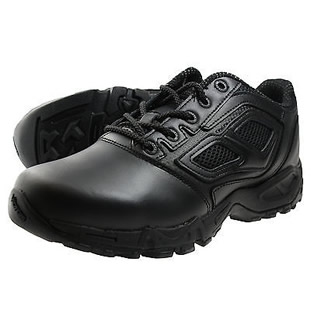5 Tips Security Shoes

When it comes to workplace safety, one of the most critical aspects to consider is the type of footwear worn by employees. Security shoes, also known as safety shoes or protective footwear, are designed to protect the wearer’s feet from various hazards, including heavy objects, sharp edges, and slippery surfaces. In this article, we will delve into the world of security shoes, exploring their importance, features, and benefits. We will also provide five valuable tips for selecting the right security shoes for your workplace.
Security shoes are a crucial component of personal protective equipment (PPE) in various industries, including construction, manufacturing, and healthcare. They are designed to provide a barrier between the foot and potential hazards, reducing the risk of injury and promoting a safe working environment. With so many options available on the market, choosing the right security shoes can be a daunting task. Here are five tips to help you make an informed decision:
1. Assess the Work Environment
Before selecting security shoes, it’s essential to assess the work environment and identify potential hazards. Consider the types of tasks employees will be performing, the surfaces they will be walking on, and the materials they will be handling. For example, if employees will be working with heavy machinery, they may require shoes with steel toes or puncture-resistant midsoles. If they will be walking on slippery surfaces, shoes with slip-resistant outsoles may be necessary.
2. Choose the Right Material
Security shoes are made from a variety of materials, including leather, synthetic materials, and rubber. Leather shoes are durable and breathable, making them an excellent choice for warm environments. Synthetic materials, on the other hand, are lightweight and easy to clean, making them ideal for workplaces where employees are exposed to chemicals or other hazardous substances. Rubber shoes are slip-resistant and flexible, making them perfect for workplaces with wet or oily surfaces.
3. Consider Comfort and Fit
Security shoes should not only provide protection but also comfort and support. Look for shoes with cushioning, arch support, and a comfortable fit. A well-fitting shoe can reduce the risk of foot fatigue, blisters, and other discomforts. It’s also essential to consider the width and depth of the shoe, as well as the type of closure system used. For example, shoes with laces or Velcro straps can provide a secure fit, while shoes with elastic sides can be easier to slip on and off.
4. Look for Certification and Compliance
When selecting security shoes, it’s crucial to look for certification and compliance with relevant industry standards. For example, the American National Standards Institute (ANSI) and the Occupational Safety and Health Administration (OSHA) provide guidelines for the manufacture and testing of safety shoes. Look for shoes that meet these standards, and check for certifications such as ASTM (American Society for Testing and Materials) or EN (European Norm).
5. Regular Maintenance and Inspection
Finally, it’s essential to regularly maintain and inspect security shoes to ensure they remain effective. This includes cleaning the shoes regularly, checking for signs of wear and tear, and replacing them when necessary. It’s also important to train employees on how to properly wear and care for their security shoes, including how to tie laces, adjust Velcro straps, and clean the shoes.
Regular maintenance and inspection of security shoes can help extend their lifespan and ensure they continue to provide protection. It's also essential to establish a clear policy for the use and maintenance of security shoes in the workplace, including procedures for reporting damaged or worn-out shoes.
In conclusion, security shoes are a vital component of workplace safety, and selecting the right pair can be a challenging task. By assessing the work environment, choosing the right material, considering comfort and fit, looking for certification and compliance, and regular maintenance and inspection, employers can ensure their employees have the best possible protection for their feet. Remember, security shoes are not just a piece of equipment; they are an investment in the health, safety, and well-being of employees.
What are the most common types of security shoes?
+The most common types of security shoes include steel-toed shoes, puncture-resistant shoes, slip-resistant shoes, and chemical-resistant shoes. Each type is designed to provide protection against specific hazards, and the choice of shoe depends on the work environment and tasks performed.
How often should security shoes be replaced?
+The frequency of replacement depends on various factors, including the type of shoe, usage, and work environment. Generally, security shoes should be replaced every 6-12 months or sooner if they show signs of wear and tear. It's essential to regularly inspect shoes for damage and replace them when necessary to ensure continued protection.
Can security shoes be customized?
+Yes, many manufacturers offer customization options for security shoes, including different sizes, widths, and colors. Some manufacturers also offer bespoke designs for specific industries or workplaces. Customization can help ensure a better fit and provide additional protection against specific hazards.
By following these tips and considering the unique needs of your workplace, you can ensure that your employees have the best possible protection for their feet. Remember, security shoes are a critical component of workplace safety, and investing in the right pair can help prevent injuries, reduce downtime, and promote a safe and healthy work environment.



